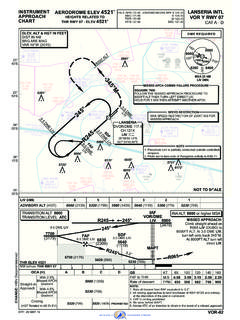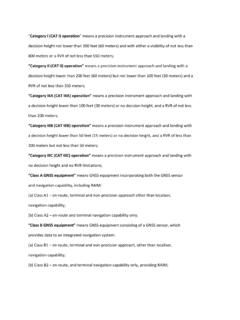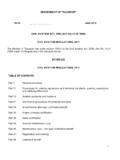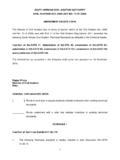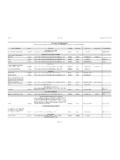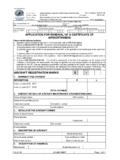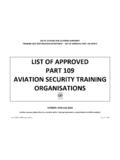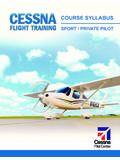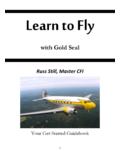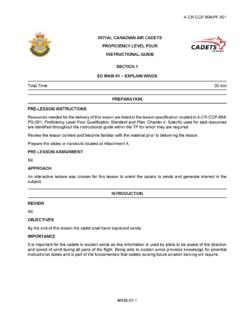Transcription of Flight Instructors Training Procedures revised AIC x - CAA
1 revised by Wouter Gous, Bob Ewing and Lee-Anne Dixon 29 June 2009 !"# $ %# & " " '$ # Flight INSTRUCTOR S MANUAL OF Training Procedures Index PART 1 EXERCISE 1: Aircraft Systems .. 1 EXERCISE 1E: Emergency Drills .. 3 EXERCISE 2: Preparation for Flight and action After Flight .. 7 EXERCISE 3: Air Experience .. 9 EXERCISE 4: Effects of Controls .. 11 EXERCISE 5: Taxying .. 19 EXERCISE 6: Straight and Level 25 EXERCISE 7: Climbing .. 33 EXERCISE 8: 43 Side-Slipping .. 53 EXERCISE 9: Turning .. 59 Descending and Climbing 63 EXERCISE 10A: Slow 67 EXERCISE 10B: Stalling.
2 73 EXERCISE 11: Spinning & Spin Avoidance .. 83 EXERCISE 12: The Take-off and Climb to The Downwind 91 EXERCISE 13: Circuit, Approach and Landing .. 97 EXERCISE 12E & 13E: 107 Crosswind Take-off and 109 EXERCISE 14: First Solo .. 113 EXERCISE 15: Advanced 117 The Maximum Rate 123 EXERCISE 16: Forced Landing without Power .. 127 EXERCISE 17A: Low Flying .. 133 EXERCISE 17B: Precautionary 139 EXERCISE 18A: Pilot 145 EXERCISE 18B: Navigation at Lower Levels/Reduced Visibility .. 155 EXERCISE 18C: Use of Radio Navigation Aids under 163 !"# $ %# & " " '$ # EXERCISE 19: Instrument 165 EXERCISE 19: Lesson 171 EXERCISE 19: Lesson 177 EXERCISE 19: Lesson 181 EXERCISE 19: Lesson 185 EXERCISE 19: Lesson 189 EXERCISE 19: Lesson 193 EXERCISE 19: Lesson 197 EXERCISE 19: Lesson 201 EXERCISE 19: Lesson 203 EXERCISE 19: Lesson 205 EXERCISE 19: Lesson 207 EXERCISE 19: Lesson 209 EXERCISE 19: Lesson 211 EXERCISE 19: Lesson 213 EXERCISE 19: Lesson 215 EXERCISE 19: Lesson 219 EXERCISE 19: Lesson 221 EXERCISE 19: Lesson 223 EXERCISE 19: Lesson 225 EXERCISE 19: Lesson 227 EXERCISE 19: Lesson 229 EXERCISE 19: Lesson 233 EXERCISE 19.
3 Lesson 237 EXERCISE 19: Lesson 239 EXERCISE 19: Lesson 241 EXERCISE 19: Lesson 245 EXERCISE 19: Lesson 247 EXERCISE 19: Lesson 249 EXERCISE 19: Lesson 251 EXERCISE 20: Night Flying .. 255 EXERCISE 21: Aerobatics .. 261 !"# $ %# & " " '$ # 263 Stall Turn .. 267 Slow Roll (Axial) .. 271 Barrel Roll .. 275 Roll of the Top of a Loop (Immelman Turn).. 279 Horizontal Figure of Eight (Cuban Eight) .. 281 Half Roll Entry into Horizontal Figure of Eight (Reverse Cuban Eight) .. 283 Half Roll to Inverted Flight and Recovery .. 285 EXERCISE 23: Assymmetric Flight .. 287 PART 2 AIR EXERCISE BRIFINGS NORMAL Procedures CHECKLIST PA28 140 / PA28 180 EXERCISE 1: 1E: 2 :3.
4 306 EXERCISE 4: Effects of Control .. 307 EXERCISE 5: 308 EXERCISE 6: Straight and Level 309 EXERCISE 7 / 8: Climbing and Descending .. 310 EXERCISE 9: Turning .. 311 EXERCISE 10A: Slow 312 EXERCISE 10B: Stalling .. 313 EXERCISE 11: Spinning and Avoidance .. 314 EXERCISE 12 &13: Take-off, Circuit and 315 EXERCISE 13: Touchdown Profile (Touch and Go Landing).. 316 EXERCISE 12E: 13E: Circuit Emergencies .. 317 EXERCISE 15: Advanced 318 EXERCISE 16: Forced Landing .. 319 EXERCISE 17: Precautionary 320 ( !"# $ %# & " " '$ # ( !"# $ %# & " " '$ # PART 1 ) !"# $ # & " " '$ # Flight INSTRUCTOR S MANUAL OF Training Procedures EXERCISE 1 AIRCRAFT SYSTEMS Progressive instruction should be given so that by the time the student is ready for solo he should be familiar with: i.)
5 The fuel and oil systems. ii. The pneumatic system. iii. The electrical system. iv. The Flight and engine instruments. v. The handling and use of radio/navigation equipment. vi. Fire extinguishing methods. vii. The hydraulic system. viii. The heating and ventilation system. ix. Ice and rain protection a. Engine. b. Airframe. x. Flight an engine control systems. CHECK LISTS AND DRILLS The student must learn all check lists and drills thoroughly so that his actions on the ground and in the air become instinctive. He should be able to locate all controls, indicators and switches without having to look for them; to this end the student should seat himself in the aircraft and practice with the aid of pilot s notes.
6 EMERGENCY DRILLS When teaching emergency drills, emphasize seconds will count when an emergency arises. Do not give the impression that such emergencies are commonplace, and stress the fact that since emergencies are rare, the unexpected nature of the occurrence demands an instinctive drill which needs to be practised at intervals to ensure that no time is lost through momentary confusion or indecision. The following drills must be thoroughly learned:- i. Action in the event of fire in the air and on the ground. ii. Emergency communication Procedures . !"# $ %# & " " '$ # Intentionally left blank. * !"# $ # & " " '$ # EXERCISE 1E EMERGENCY DRILLS When teaching emergency drills, emphasize seconds will count when an emergency arises.
7 Do not give the impression that such emergencies are commonplace, and stress the fact that since emergencies are rare, the unexpected nature of the occurrence demands and instinctive drill which needs to be practiced at intervals to ensure that no time is lost through momentary confusion or indecision. The following drills must be thoroughly learned: - i. Action in the event of fire in the air and on the ground. ii. Emergency communication Procedures . ACTION IN THE EVENT OF FIRE 1. AIM Fire is an extremely rare occurrence in the modern aircraft, but it is essential that the pilot has a thorough knowledge of the Procedures to be adopted in his particular aircraft to extinguish a fire both on the ground and in the air.
8 WHAT THE INSTRUCTOR IS TO TEACH i. Discuss the probate causes for various types of aircraft fires, as well as the technical principles involved in extinguishing those fires. ii. Ensure that the student has a thorough knowledge in the use of the aircraft s fire extinguishing equipment. iii. The ground/air exercise briefing: a. Appropriate Procedures and checklists. b. Engine fire analysis and preventative measures. c. Use of fire extinguishing equipment in air and on ground. d. Removal of smoke form aircraft cabin. e. Side slipping technique to keep flames from cabin area. f. Preparation of aircraft and passengers for forced landing. g. Appropriate radio call May-Day or Pan-Pan.
9 H. Engine considerations, safety and airmanship. iv. De-briefing after simulated exercise on ground and in air. WHY IS IT BEING TAUGHT To give the student confidence in his ability to assess the type of fire occurring and to ensure that he carries out the correct fire fighting drill, thereby preventing possible damage to the aircraft and injury to occupants. HOW THE EXERCISE APPLIES TO FLYING The fire may occur either in the air or on the ground, and may be due to any of the following reasons: i. On the ground: a. Over-priming the engine on start up, causing excess fuel to collect in exhaust systems. b. Fractured fuel and oil lines under pressure leaking onto hot exhaust systems.
10 + !"# $ %# & " " '$ # c. During re-fuelling operations a fire may occur due to incorrect grounding of re-fuelling equipment. d. Fire in electrical system or radio equipment. e. Cockpit/cabin interior fire due to electrical fault/passenger smoking. ii. In the Air: a. Fractured fuel and oil lines under pressure leaking onto hot exhaust systems. b. Internal mechanical damage to the engine causing a fire in the exhaust manifold. c. Fire in the induction system of the engine. d. Fire in the electrical system or radio equipment. e. Cabin fire. 2. PRINCIPLES INVOLVED 1. EXPLAIN WHAT CAUSES FIRES. 2. DISCUSS VARIOUS TYPES OF FIRE EXTINGUISHERS AND THEIR APPLICATION. 3. DESCRIPTION OF THE GROUND/AIR EXERCISE a.

